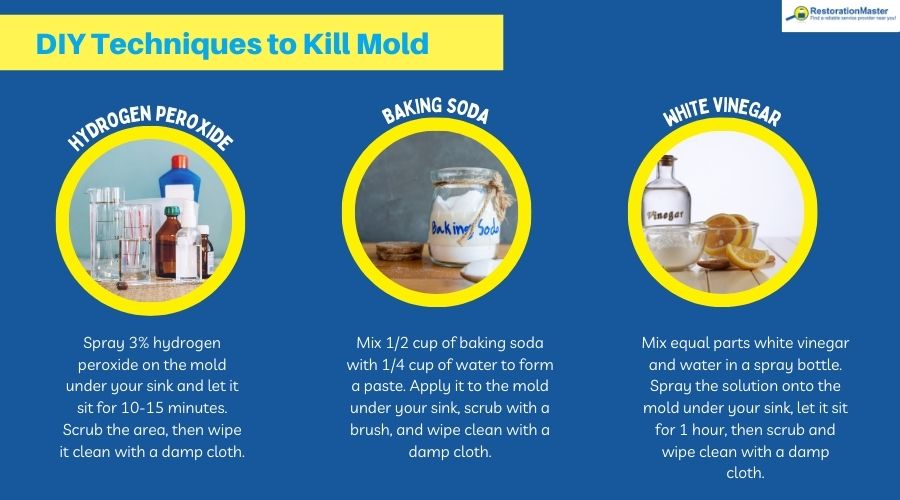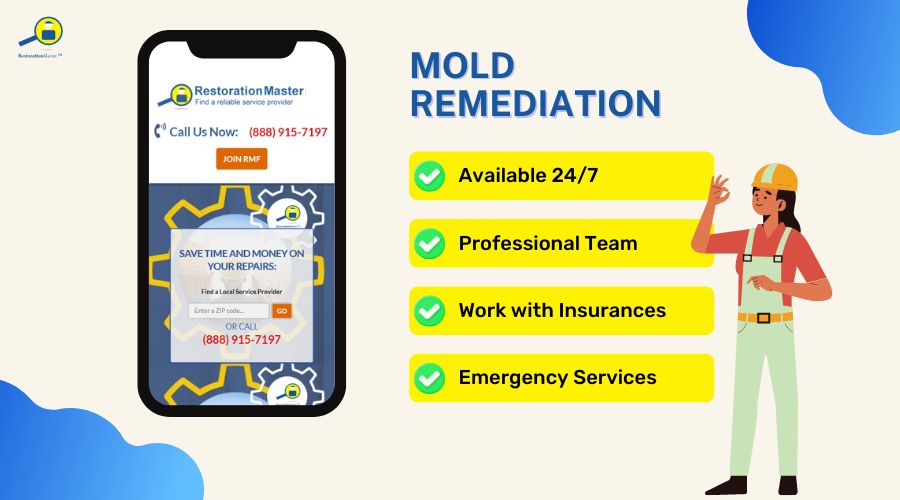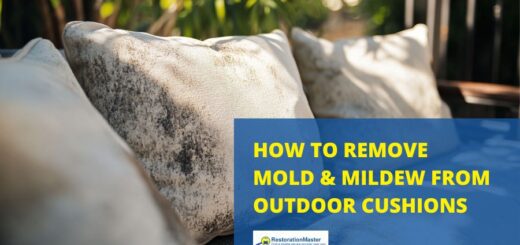How to Respond to Black Mold Under the Sink

how to remove moldMold is a type of fungus that grows in damp or humid conditi... More under kitchen sink
Discovering moldMold is a type of fungus that grows in damp or humid conditi... More in your home can be a frightening experience. With the damp and dark environment underneath sinks, this is an area that is highly susceptible to black moldMold is a type of fungus that grows in damp or humid conditi... More growth. In order to keep your family safe from potential health hazards caused by black moldMold is a type of fungus that grows in damp or humid conditi... More, it’s important to take swift action and remediate the problem as soon as possible. If you’ve noticed telltale signs of black mold under your sink, here are some things you should know.
Is Mold Under the Sink Dangerous?
MoldMold is a type of fungus that grows in damp or humid conditi... More under the sink can be a worrisome sight, as it not only detracts from the visual aesthetic of a kitchen but can also harm a person’s health when exposed. MoldMold is a type of fungus that grows in damp or humid conditi... More sporesSpores are microscopic reproductive units of fungi or mold t... More can trigger allergy and asthma symptoms in individuals, such as a runny or stuffy nose, sore throat, itchiness in the eyes and skin, wheezing, and watery eyes. People with allergies or asthma might find moldMold is a type of fungus that grows in damp or humid conditi... More especially concerning, as breathing in sporesSpores are microscopic reproductive units of fungi or mold t... More can exacerbate existing respiratory problems. Therefore, moldMold is a type of fungus that grows in damp or humid conditi... More under the sink should be addressed right away to prevent any negative consequences on one’s health.
Failing to address moldMold is a type of fungus that grows in damp or humid conditi... More growth under your kitchen sink is a dangerous and costly mistake. In addition to risking your health and the health of your family, unpleasant odors, discoloration, and risk of structural damage can all result from leaving moldMold is a type of fungus that grows in damp or humid conditi... More unattended. Once it starts, it grows quickly and can spread to other surfaces. It’s best to stay on top of any potential signs of moldMold is a type of fungus that grows in damp or humid conditi... More immediately to prevent difficulties in removal down the road. Procrastinating with this issue is hazardous and moldMold is a type of fungus that grows in damp or humid conditi... More should be mitigated as soon as possible with the help of Mold Removal Specialist if necessary. Taking time to spot-check underneath your sink could save you a lot of trouble in the long run.
How to Remove Black Mold Under the Sink
Now that you’re aware of the dangers associated with leaving moldMold is a type of fungus that grows in damp or humid conditi... More unattended, it’s important to know what to do if you ever find yourself with moldMold is a type of fungus that grows in damp or humid conditi... More in one of the bathrooms in your home. We recommend the following moldMold is a type of fungus that grows in damp or humid conditi... More removal tacticsTactics are the specific methods or actions used to achieve ... More:
Identify the Source of Moisture
The first step is to identify and address the source of moisture that is causing moldMold is a type of fungus that grows in damp or humid conditi... More growth. This could be a leaky pipe or an issue with drainage. It’s important to find and repairRepair is the act of fixing or restoring damaged property, m... More any problems before attempting to clean up the existing moldMold is a type of fungus that grows in damp or humid conditi... More growth.
Use a Cleaning Agent to Remove the Mold
If practical, try to remove any visible moldMold is a type of fungus that grows in damp or humid conditi... More growth yourself. Be sure to wear gloves, protective eyewear, and a respirator mask while cleaning up the area. Any of the following products are effective at removing moldMold is a type of fungus that grows in damp or humid conditi... More:

diy methods to kill moldMold is a type of fungus that grows in damp or humid conditi... More
Hydrogen Peroxide
Hydrogen peroxide’s effectiveness in combating moldMold is a type of fungus that grows in damp or humid conditi... More growth makes it a fantastic choice for getting rid of moldMold is a type of fungus that grows in damp or humid conditi... More under the sink. At a 3% solutionA solution is a homogeneous mixture of two or more substance... More, it is not difficult to make, and with proper safety precautions, it can make a great DIY solutionA solution is a homogeneous mixture of two or more substance... More for eliminating moldMold is a type of fungus that grows in damp or humid conditi... More gently and quickly. It is important, however, to be aware of the potential dangers if hydrogen peroxide is spilled on fabrics or carpets; even at low concentrations, this could be damaging. Taking care to avoid these situations will ensure hydrogen peroxide’s maximum efficacy—and your peace of mind.
Baking Soda
Baking soda is an excellent eco-friendly moldMold is a type of fungus that grows in damp or humid conditi... More cleaner. It is cost-effective, safe to use, and easy to find in most households. Dissolving 1 teaspoon of baking soda in 1 cup of water can create a powerful solutionA solution is a homogeneous mixture of two or more substance... More for dealing with household moldMold is a type of fungus that grows in damp or humid conditi... More. For an extra boost of cleaning power, you can also combine baking soda with white vinegar. This combination will provide a stronger cleaning agent for tackling areas where there is more stubborn or widespread moldMold is a type of fungus that grows in damp or humid conditi... More growth.
White Vinegar
Cleaning your sink area with white vinegar is an effective and affordable way to tackle black moldMold is a type of fungus that grows in damp or humid conditi... More. You can use it at full strength or make it into a solutionA solution is a homogeneous mixture of two or more substance... More with warm water for less invasive application. Once the visible moldMold is a type of fungus that grows in damp or humid conditi... More has been scrubbed away, it can be helpful to apply white vinegar periodically to prevent future moldMold is a type of fungus that grows in damp or humid conditi... More growth.

mold remediationMold remediation is the process of identifying, removing, an... More services by RestorationMaster












